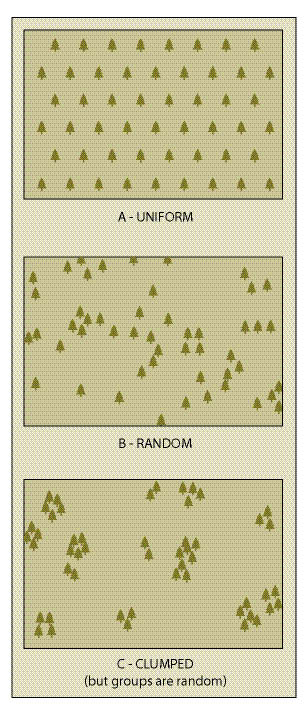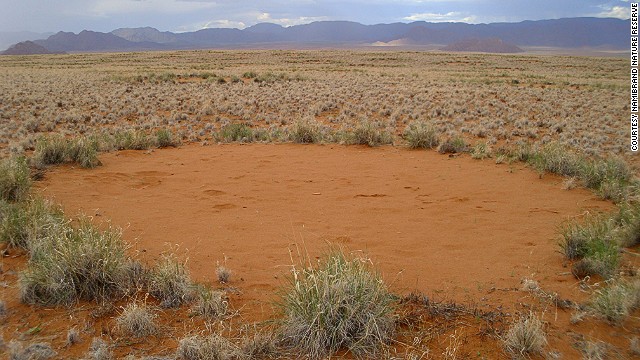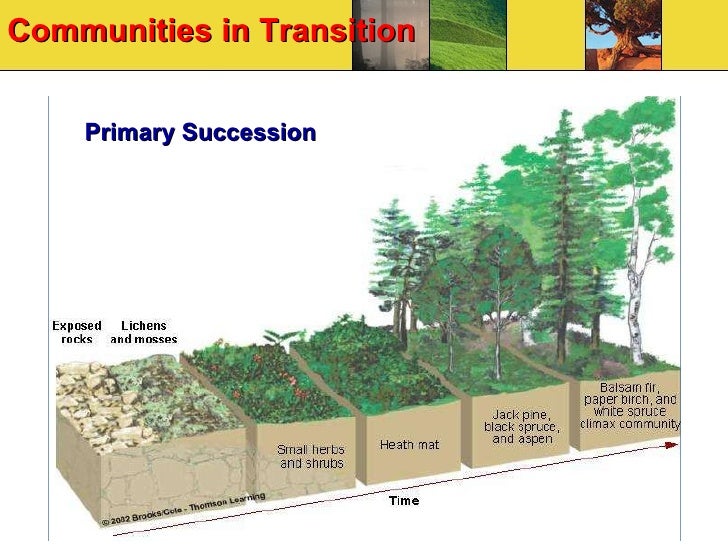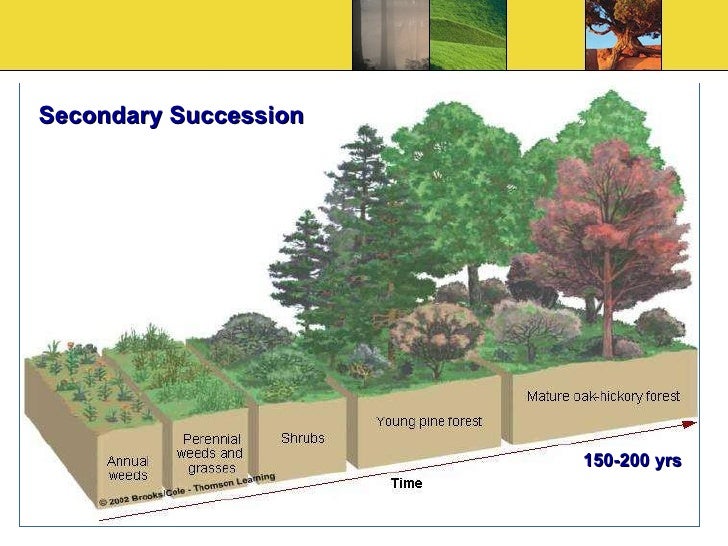 |
| Natural community |
 |
| Cultivated community |
Ecologists use three characteristics to describe communities:
1. Physical appearance: relative sizes and distributions of populations.
2. Species diversity (biodiversity): numbers of different species (richness) and abundance of individuals within a species (species evenness)
3. Niche structure: number of ecological niches, ressemblance or difference from each other and species interactions (niche refers to the habitat and resources that a particular organisms needs in order to live)
Physical appearance and structure
Plants often dominate the physical appearance of an area, so communities are frequently named for the predominant plant-life found there.
The structure of a community varies in space and time. One of the spatial aspects of structure is the vertical and horizontal distribution.
Vertical distribution/stratification (szintezettség) refers to variations at different heights in a community. Some communities exhibit little stratification (eg. grasslands), while in others it is a very important characteristic. If one looks at a forest there are significant changes in light, temperature and humidity at the different vertical levels:
canopy layer (lombkorona)
shrub layer (cserje)
herb layer (lágyszárú/gyepszint)
moss layer (mohaszint)
litter layer (avar)
root layer (gyökérzet)
subsoil (altalaj)
 |
| Vertical stratification |
Pattern (mintázat) refers to distribution in horizontal space. It is the result of competition for water and nutrients or caused by chemical inhibition, so it depends on soil, rainfall, species interactions, etc.
 |
| Pattern |
 |
| Natural example of pattern |
Dynamics refer to changes that occur in time in a community.
Aspect (aspektus) refers to periodic, cyclical variation due to time of day or change of seasons. A daily rhythm could be the activities of species in the daytime (diurnal) vs. at nighttime (nocturnal).
Succession refers to the slow gradual directional change that occurs in a community from simple to more complex.
Primary succession is the gradual establishment of biotic communities on lifeless ground. The initial communities are referred to as pioneer communities and they are made up of pioneer species, which are those species particularly able to adapt to such extreme conditions and include bacteria, fungi and lichens. As these organisms take part in biological weathering, the soil becomes better and more varied species appear. Eventually a complex climax community will develop. It is the most complex and stable community for that area.
 |
Secondary succession occurs when a climax community is disturbed (eg. forest fire, deforestation, etc), but the soil or bottom sediment remains. The initial species not usually pioneer species in this case, but opportunistic species that are capable of rapid growth and reproduction.
 |
| http://www.slideshare.net/Shohail/community-ecology-1967976 |
 |
| http://www2.fiu.edu/~oberbaue/lakes.htm |
 |
| http://www.s-cool.co.uk/a-level/geography/ecosystems/revise-it/types-of-succession |
When succession occurs towards the climax (most complex) community it is called "progressive". On the other hand, biological change towards simpler communities is called "degradation". Degradation can occur at any time when the biodiversity of a community decreases.
When new habitats open up, they usually quickly populated by species that are considered to be r-strategists. These organisms are typically capable of reproducing very rapidly and producing very large numbers of offspring. They are generally small in size and short-lived. Rodents, insects and weeds are examples of r-strategists
Other organisms that appear at later stages of succession are called k-strategists. They have life history traits that which help to maintain a stable population. In general, they are larger organisms, with delayed reproduction. They usually reproduce multiple times in their lifetime (which tends to be relatively long) and have few, but large offspring at each reprodutive event and parental care is only found in k-strategists.
Obviously, there is a continuous spectrum between the r- and k-strategies and not all organisms are easily classified. Survivorship curves can give some insight into which strategy is used.
At the beginning of succession biomass and biodiversity is usually low and increases as succession progresses towards the climax community. Higher biodiversity usually creates more stable communities. Within a climax community there are usually small cycles of change that occur (like the death of a tree and the regeneration in that area), which are not notable when observing the whole community. Maintaining the balance in the community requires constant dynamic variations to maintain longterm stability.
Other organisms that appear at later stages of succession are called k-strategists. They have life history traits that which help to maintain a stable population. In general, they are larger organisms, with delayed reproduction. They usually reproduce multiple times in their lifetime (which tends to be relatively long) and have few, but large offspring at each reprodutive event and parental care is only found in k-strategists.
Obviously, there is a continuous spectrum between the r- and k-strategies and not all organisms are easily classified. Survivorship curves can give some insight into which strategy is used.
 |
| Survivorship curve (oysters are extreme r-strategists, humans are k-strategists) |
At the beginning of succession biomass and biodiversity is usually low and increases as succession progresses towards the climax community. Higher biodiversity usually creates more stable communities. Within a climax community there are usually small cycles of change that occur (like the death of a tree and the regeneration in that area), which are not notable when observing the whole community. Maintaining the balance in the community requires constant dynamic variations to maintain longterm stability.
Types of species
Native species are those whose original home are in a particular area.
Non-native (introduced) species originally evolved in a different area and migrated or were introduced into a new area.
Indicator species alert us to changes taking place in biological communities, examples include lichens, canaries and other birds
Index (keystone) species (karaktérfajok) are those that are typical of a community, determine the type and number of other species, for example wolves in Yellowstone
Foundation species shape communities by creating and enhancing habitat that benefits other species, for example elephants pull of trees and create clearings that benefit grazing species
No comments:
Post a Comment